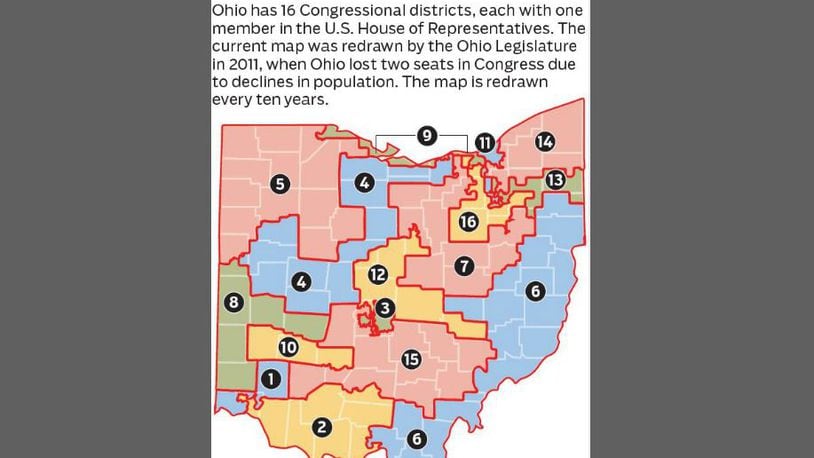RELATED: Negotiators working to get deal on Congressional redistricting reform
She said a revised proposal announced on Monday by State Sen. Matt Huffman, R-Lima, remained essentially unchanged even after negotiations that lasted all day and into the evening on Wednesday. The coalition and Democrats in the legislature rejected the changes announced by Huffman on Monday.
Turcer said Republicans continue to insist that counties can be divided into more than one congressional district, want language that does not specifically forbid the practice of drawing districts to favor one political party over another; and would still leave redistricting primarily in the hands of the state legislature, as it now is.
Huffman has said he does not plan to move his proposal to the May ballot without Democratic support in the House and Senate.
John Fortney, press secretary for the Ohio Senate Majority Caucus, said Huffman’s revised plan increased the power of the minority party, limits to two the number of times a county can be split and which ones can be split and keeps 65 of the 88 counties in the state unsplit. It also allows a citizen referendum to overturn it, something the coalition’s proposal does not include, Fortney said.
“It’s called a negotiation for a reason and we’ve gone far past meeting them in the middle,” he said.
Related: Debate over how Ohio should draw congressional districts heats up
A spokesman for House Speaker Cliff Rosenberger, R-Clarksville, also indicated that even as the Feb. 7 deadline for putting a reform issue on the May 8 ballot approaches “the work goes on.”
“Talks and negotiations on redistricting will continue over the weekend, and the House and Senate have each scheduled if-needed session days for Tuesday and Wednesday of next week,” said Brad Miller, press secretary for Rosenberger.
Fair Districts = Fair Elections is led by the League of Women Voters of Ohio and Common Cause Ohio. The group has about 200,000 of the necessary 306,591 voter signatures to put a reform proposal on the November ballot.
Their proposal mostly mirrors the 2015 constitutional amendment that was approved by 71 percent of Ohio voters to amend how state legislative district lines are drawn. The coalition wants voters in November to approve a plan to put congressional redistricting in the hands of the Ohio Redistricting Commission consisting of the governor, secretary of state, state auditor and one person each appointed by the Ohio House and Senate majority and minority parties.
Map approval would need a majority vote, with at least two members of the minority party agreeing.
The coalition proposal would outlaw gerrymandering, minimize the splitting of counties and communities, require that districts be compact and nearly equal in population, mandate transparency in the process and require representational fairness using a 10-year tally of Ohio voters’ partisan preferences.
Related: Democrats reject GOP plan to change Ohio congressional districts
Congressional districts are drawn every 10 years following the U.S. Census. The last time it was done was 2011 when the Republican-controlled legislature drew lines that the coalition says resulted in gerrymandered districts.
Of the state’s 16 congressional districts, 12 are held by Republicans.
Other stories by Lynn Hulsey and Laura A. Bischoff
Report: Trump to visit Cincinnati Monday
Cincinnati congressman did CPR, helped victims after train crash
Taylor challenges DeWine to a debate; says he knows he would lose
Governor race: DeWine, Cordray each raise $2M but DeWine has more cash
WHAT DO YOU THINK?
How do you think Ohio should draw its congressional districts? Speak out on our Ohio Politics Facebook page.
